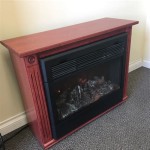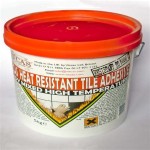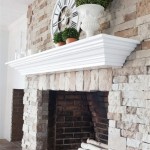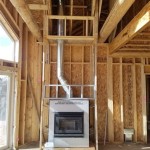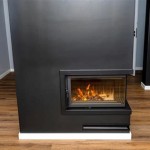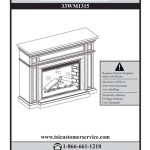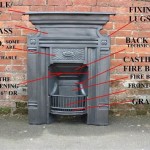Tile Around Fireplace: A Comprehensive Guide
The fireplace serves as a focal point in many homes, providing warmth, ambiance, and a gathering space. Enhancing its aesthetic appeal often involves incorporating tile. Tile offers a multitude of design possibilities, functional benefits, and durability, making it a popular choice for fireplace surrounds and hearths. Selecting the right tile requires careful consideration of factors such as heat resistance, style, maintenance, and budget. This article provides a detailed guide to navigating the world of tile around fireplaces, exploring various options and best practices.
Understanding the Importance of Heat Resistance
One of the prime considerations when selecting tile for a fireplace is its ability to withstand high temperatures. Fireplaces generate considerable heat, and the tile surrounding them must be capable of handling this heat without cracking, warping, or discoloring. Not all tile types are created equal in this regard. Porcelain and ceramic tiles are generally considered good choices due to their inherent heat resistance and durability. Natural stone options, such as granite and slate, are also suitable, provided they are properly sealed.
The Porcelain Enamel Institute (PEI) rating system provides a benchmark for evaluating the abrasion resistance of tile. While this rating primarily concerns wear and tear, it also offers an indication of the tile's overall durability, which is indirectly related to its heat resistance. Tiles with a higher PEI rating tend to be more robust and better equipped to withstand temperature fluctuations. It is advisable to consult with a tile professional to determine the specific heat resistance requirements based on the type of fireplace and the expected usage.
The mortar and grout used to install the tile also play a crucial role in ensuring heat resistance. It is essential to use heat-resistant mortar and grout specifically designed for fireplace applications. These materials are formulated to withstand high temperatures and prevent cracking or crumbling. Using standard mortar and grout can lead to premature failure of the tile installation and potentially compromise the safety of the fireplace.
Exploring Tile Styles and Design Options
The aesthetic possibilities of tile around a fireplace are virtually limitless. Tile comes in a wide array of styles, colors, patterns, and textures, allowing homeowners to create a fireplace surround that complements their overall décor. From classic to contemporary, there is a tile option to suit every taste.
Ceramic tiles are a versatile and affordable option. They are available in a vast range of colors and patterns, including those that mimic the look of natural stone or wood. Ceramic tiles are relatively easy to install and maintain, making them a popular choice for budget-conscious homeowners. However, they may not be as durable or heat-resistant as porcelain or natural stone options.
Porcelain tiles offer enhanced durability and heat resistance compared to ceramic tiles. They are also less porous, making them more resistant to stains and moisture. Porcelain tiles are available in a wide range of styles, including those that replicate the look of natural stone, wood, or concrete. They are a good choice for homeowners who want a durable and aesthetically pleasing fireplace surround.
Natural stone tiles, such as granite, marble, slate, and travertine, offer a luxurious and timeless look. Each piece of natural stone is unique, adding character and depth to the fireplace surround. Natural stone tiles are highly durable and heat-resistant, but they can be more expensive than ceramic or porcelain tiles. They also require sealing to protect them from stains and moisture.
Glass tiles offer a modern and sophisticated look. They are available in a variety of colors, shapes, and sizes, and can be used to create stunning mosaic patterns. Glass tiles are relatively easy to clean and maintain, but they may not be as heat-resistant as other tile options. It is important to choose tempered glass tiles specifically designed for fireplace applications.
Subway tiles, known for their rectangular shape and timeless appeal, are a classic choice for fireplace surrounds. They can be arranged in various patterns, such as a traditional brick pattern or a more modern stacked pattern. Subway tiles are available in a wide range of colors and materials, including ceramic, porcelain, and glass.
Mosaic tiles provide an opportunity to create intricate and personalized designs. They are available in a variety of materials, including ceramic, porcelain, glass, and natural stone. Mosaic tiles can be used to create a focal point around the fireplace or to add subtle accents to the overall design.
Installation Considerations and Best Practices
Proper installation is crucial to ensuring the longevity and performance of the tile around a fireplace. Hiring a qualified tile installer is highly recommended, as they have the experience and expertise to handle the complexities of fireplace tile installation. However, for those with DIY experience, careful planning and execution can yield satisfactory results.
Before beginning the installation, it is essential to prepare the surface. The surface must be clean, level, and structurally sound. Any existing paint, wallpaper, or loose debris should be removed. If the surface is uneven, it may need to be leveled with a self-leveling compound. A cement backer board should be installed over the existing surface to provide a stable and moisture-resistant substrate for the tile.
The layout of the tile should be carefully planned before starting the installation. This involves determining the placement of the tiles and ensuring that they are evenly spaced and aligned. It is also important to consider the placement of any decorative elements, such as borders or accents. A dry layout, where the tiles are placed on the surface without mortar, allows for adjustments and ensures a satisfactory final result.
When applying the mortar, it is important to use a notched trowel to create even ridges. This ensures that the tile is properly bonded to the surface. The mortar should be applied in small sections to prevent it from drying out before the tile is set. The tiles should be pressed firmly into the mortar and adjusted to ensure that they are level and aligned.
After the tile has been installed, the grout should be applied to fill the spaces between the tiles. The grout should be spread evenly and excess grout should be wiped away with a damp sponge. The grout should be allowed to cure completely before sealing. Sealing the grout helps to protect it from stains and moisture.
Expansion joints are necessary to accommodate the expansion and contraction of the tile due to temperature fluctuations. These joints are typically filled with a flexible sealant. The placement and size of expansion joints should be determined based on the size and type of tile. Proper expansion joints prevent cracking and buckling of the tile installation.
Maintenance and Care
Maintaining the tile around a fireplace is essential to preserving its appearance and extending its lifespan. Regular cleaning and sealing can help to prevent stains, discoloration, and damage.
The tile should be cleaned regularly with a mild detergent and water. Harsh chemicals or abrasive cleaners should be avoided, as they can damage the tile surface. A soft cloth or sponge should be used to wipe the tile clean. For stubborn stains, a tile cleaner specifically designed for the type of tile should be used.
The grout should be sealed periodically to protect it from stains and moisture. A grout sealant should be applied to the grout lines according to the manufacturer's instructions. The frequency of sealing will depend on the type of grout and the amount of use the fireplace receives. Sealing grout prevents the grout from absorbing spills and makes cleaning easier.
Ash and soot can accumulate on the tile around a fireplace. These deposits should be removed regularly to prevent staining and discoloration. A soft brush or vacuum cleaner can be used to remove loose ash and soot. For stubborn deposits, a tile cleaner specifically designed for removing ash and soot should be used.
It is important to inspect the tile regularly for any signs of damage, such as cracks, chips, or loose tiles. Any damage should be repaired promptly to prevent further deterioration. Small cracks can be filled with a tile repair epoxy. Loose tiles should be re-adhered with mortar. Addressing damage promptly prevents the problem from worsening and potentially requiring more extensive repairs.
When using the fireplace, it is important to take precautions to protect the tile from excessive heat. A fireplace screen should be used to prevent sparks and embers from landing on the tile. The fireplace should not be overloaded with wood, as this can generate excessive heat. Proper ventilation should be ensured to prevent the buildup of smoke and soot.

How To Tile A Fireplace My Uncommon Slice Of Suburbia
/102661017-6a23c040b71843379188b96b21ac1a08.jpg?strip=all)
How To Tile A Fireplace

Corner Lot Modern Farmhouse Rustic Fireplace Tile Remodel

Fireplace Feature Wall Ideas Queen City Stone Tile

Hottest Fireplace Trend Tile Flooring America

Fireplace Tile Ideas Designs To Inspire You

Remodeling A Fireplace With Tile
Trend Watch Tile Fireplace Surrounds

How To Tile A Fireplace Even If It S Brick The Handyman Daughter

How To Tile A Fireplace Surround And Hearth Build Basic
Related Posts

